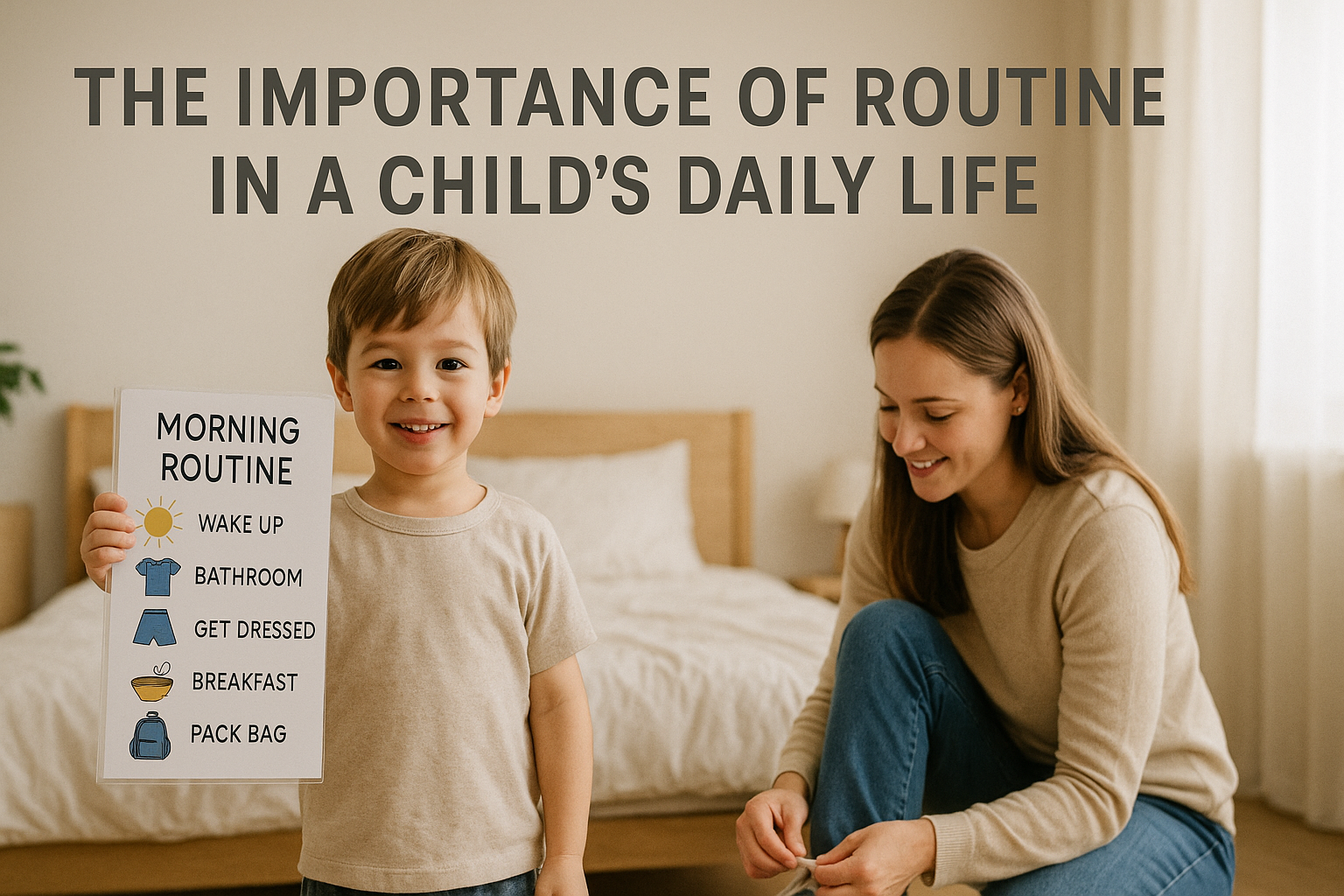Children thrive on routine. Knowing what to expect helps them feel safe, secure, and confident in their world. While life with kids can be unpredictable, adding structure to the day—even in small ways—can make a big difference in their behavior, development, and emotional well-being.
In this article, we’ll explore why routines matter, what they should include, and how to create one that works for your family.
Why Routine Matters for Children
A daily routine isn’t just about controlling behavior—it supports your child’s growth in powerful ways.
Key Benefits of Routine:
- Emotional security: Predictable events reduce anxiety and fear
- Improved cooperation: Children are more likely to follow rules they understand
- Better sleep and eating habits: Consistency helps regulate biological rhythms
- More independence: Kids learn to manage time and tasks
- Stronger parent-child relationships: Less chaos leads to more connection
Routines create rhythm. Rhythm brings calm.
What Makes a Good Routine?
A good routine is predictable but flexible. It provides structure without being rigid.
Essential Qualities:
- Consistent timing (wake up, meals, bedtime)
- Age-appropriate activities
- Transitions with warnings (“In 5 minutes, we’ll clean up”)
- Moments for connection (reading, play, cuddles)
- Time for rest and movement
Remember: it’s not about perfection. The goal is guidance, not control.
Key Parts of a Child’s Daily Routine
Let’s break down some of the most important moments in your child’s day—and how to make them smoother and more meaningful.
1. Morning Routine
Mornings set the tone for the day. A calm, consistent morning helps your child feel grounded.
Include:
- Wake-up at the same time each day
- Bathroom routine (toilet, brush teeth, wash face)
- Get dressed
- Breakfast
- Prepare for school or activities
Tip: Use a visual schedule (pictures for young children) so they know what’s coming next.
2. Mealtime Routine
Regular mealtimes improve digestion, reduce pickiness, and promote family connection.
- Offer meals at roughly the same time each day
- Eat together when possible
- Reduce distractions (no screens)
- Use meals as a time to talk and bond
Predictable eating times also reduce snacking and emotional eating.
3. Play and Learning Time
Children need both structured and free play during the day.
- Schedule quiet learning time (puzzles, books, crafts)
- Include outdoor or physical play
- Let them choose some activities to build independence
- Use timers to signal transitions (especially helpful for toddlers)
Play is not a break from learning—it is learning.
4. Nap or Rest Time
Rest is vital for emotional regulation and healthy development.
- Keep nap times consistent
- Create a wind-down routine before rest
- Even if your child stops napping, offer quiet time with books or soft music
Avoid screen time before naps—it can overstimulate and delay rest.
5. After-School Routine (for older kids)
Structure after-school time to avoid chaos and burnout.
- Snack
- Homework or quiet time
- Chores or helping with dinner
- Unstructured play
Keep transitions smooth by offering choices and using clear time frames.
6. Bedtime Routine
A consistent bedtime routine is one of the most important habits for children.
Include:
- Bath or warm wash
- Pajamas
- Brush teeth
- Read a book
- Cuddles or short talk about the day
- Lights out at the same time each night
Avoid screens for at least 30–60 minutes before bed, as they disrupt sleep.
How to Start a Routine (and Make It Stick)
Introducing a new routine? Start small.
Step-by-Step Guide:
- Pick one part of the day (e.g., bedtime)
- Choose 3–5 simple steps your child can follow
- Use a visual chart or checklist if helpful
- Practice with them for a few days
- Be consistent, even when things get busy
- Celebrate cooperation with praise or stickers
Don’t expect instant results. Routines take time, especially with young kids.
What to Do When Routine Is Disrupted
Life happens—vacations, illness, visitors, bad days. Routines will be thrown off sometimes.
Tips to Recover:
- Return to your usual schedule as soon as possible
- Use language like, “We’re getting back to our normal rhythm.”
- Stay calm and patient—especially with sleep or eating disruptions
- Keep core routines in place (like bedtime) even during travel or chaos
Flexibility is part of the process. The goal is stability, not strictness.
The Role of Routine in Emotional Development
Routines help children develop emotional intelligence by:
- Teaching patience through waiting for transitions
- Building confidence through predictable outcomes
- Helping them manage frustration when routines are interrupted
- Offering comfort during emotional ups and downs
Children who know what to expect feel more in control—and more secure.
Structure Creates Freedom
It may sound ironic, but the more consistent your child’s routine is, the more freedom they feel.
Why? Because structure:
- Reduces stress and confusion
- Builds trust and predictability
- Helps them develop self-discipline
You’re not creating a strict schedule—you’re creating a safe rhythm that supports growth, learning, and joy.
With time, the routine becomes second nature. And your child becomes more confident, cooperative, and calm.
